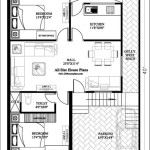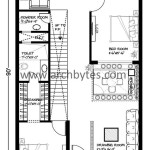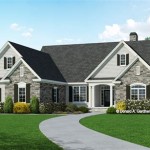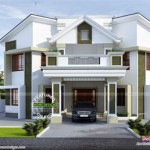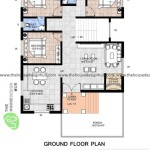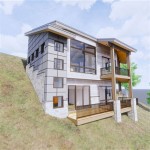Student Housing Building Plans: A Comprehensive Guide
The demand for efficient and appealing student housing continues to grow alongside rising student populations worldwide. Developing effective student housing necessitates careful planning that considers various factors, from budgetary constraints and local regulations to student needs and preferences. This article explores the crucial elements of student housing building plans, offering insights into the planning process and key considerations for developers and architects.
The initial phase of any student housing project involves thorough site analysis. This encompasses evaluating the site's location, size, topography, and existing infrastructure. Proximity to the university campus, public transportation, and local amenities are crucial factors impacting student desirability. A comprehensive feasibility study should be conducted to determine the project's viability and potential return on investment. This study should analyze market demand, construction costs, and projected rental income.
Understanding the target demographic is fundamental to developing a successful student housing project. Student preferences vary significantly, influenced by factors such as age, cultural background, and academic program. Surveys and focus groups can provide valuable insights into student needs and expectations, informing decisions regarding unit size, amenities, and overall design.
Budgetary considerations play a significant role in shaping the project scope. Construction costs, material choices, and the level of finishes will all influence the final budget. Developing a realistic budget early in the planning process is crucial for maintaining financial viability and avoiding cost overruns. Exploring various funding options, including public-private partnerships, can also contribute to project feasibility.
Local building codes and regulations dictate various aspects of the project, including building height, density, and safety requirements. Compliance with zoning regulations is essential to ensure project approval and avoid legal complications. Working closely with local authorities and obtaining the necessary permits is a critical component of the planning process.
The design of student housing units should prioritize functionality and efficiency. Space optimization is paramount, particularly in urban environments where space is often limited. Modular furniture and flexible layouts can enhance functionality and adaptability. Consideration should also be given to incorporating sustainable design principles, such as energy-efficient appliances and water-saving fixtures, to minimize environmental impact and operating costs.
The choice of building materials significantly impacts both the project's aesthetic and its durability. Selecting durable, low-maintenance materials can contribute to long-term cost savings. Consider incorporating sustainable and locally sourced materials where possible to reduce environmental impact and support the local economy.
Security is a paramount concern in student housing. Building plans should incorporate robust security measures, including access control systems, surveillance cameras, and adequate lighting. Creating a safe and secure environment for students is essential for their well-being and peace of mind.
Common areas play a vital role in fostering a sense of community among student residents. Lounges, study rooms, and recreational spaces provide opportunities for social interaction and collaboration. Designing these spaces with a focus on comfort and functionality can enhance the overall student experience.
Accessibility is a critical consideration in student housing design. Building plans should comply with accessibility guidelines to ensure that all students, regardless of physical limitations, can access and utilize the facilities. This includes incorporating features such as ramps, elevators, and accessible bathrooms.
Technology integration is increasingly important in modern student housing. Providing high-speed internet access, charging stations, and smart home features can enhance student convenience and productivity. Incorporating these technological elements into the building plans from the outset is essential for meeting the demands of today's tech-savvy students.
Sustainability is a key consideration in contemporary building design. Incorporating sustainable building practices, such as using energy-efficient materials and implementing water conservation measures, can reduce environmental impact and operating costs. Seeking LEED certification can demonstrate a commitment to sustainable design and enhance the building's marketability.
Parking provisions are an important aspect of student housing planning, particularly in areas with limited public transportation options. Providing adequate parking spaces or incorporating bicycle storage facilities can cater to students' transportation needs. Consideration should be given to the potential impact of parking on the surrounding neighborhood and traffic flow.
Landscaping and outdoor spaces can enhance the overall appeal of student housing. Creating green spaces, courtyards, and outdoor recreational areas can provide students with opportunities for relaxation and socializing. Thoughtful landscaping can also contribute to a more aesthetically pleasing environment.
Regular maintenance is essential for preserving the value and functionality of student housing. Building plans should consider the ease of maintenance and accessibility for maintenance personnel. Selecting durable, low-maintenance materials and incorporating efficient building systems can minimize long-term maintenance costs.
Future expansion possibilities should be considered during the initial planning stages. Designing the building with future expansion in mind can facilitate future growth and adapt to changing student needs. This can involve incorporating flexible layouts and leaving space for potential additions.

2 Bhk Floor Plans Of 25 45 Google Search Student House Bedroom Four

Student Housing Floor Plans Apartment Home Design Hostels

Floor Plans Inspiration By Altro

Student Housing In Elsevier Office Building Knevel Architecten Archdaily

Gallery Of University Southern Denmark Student Housing Winning Proposal C F Møller Architects 23 House How To Plan Architecture

Student Housing People S Park

82 Students Accommodation Ideas In 2024 Student Hotel Floor Plan How To

Student Housing Dezeen

Characteristic Floor Layout Of A Student Hostel In Princeton Scientific Diagram

Ground Floor Layout Fig 29 Standard Source Scientific Diagram

